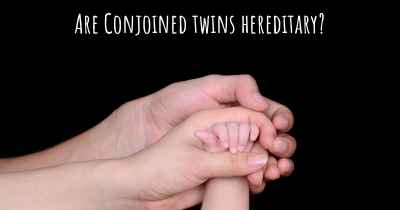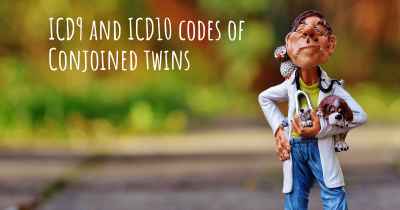Which are the causes of Conjoined twins?
See some of the causes of Conjoined twins according to people who have experience in Conjoined twins

Causes of Conjoined Twins
Conjoined twins, also known as Siamese twins, are a rare phenomenon where two babies are born physically connected to each other. This condition occurs when a single fertilized egg, which would typically develop into identical twins, fails to fully separate during early embryonic development. The exact causes of conjoined twins are not yet fully understood, but several factors have been identified as potential contributors to this unique occurrence.
Genetic Factors:
Genetic factors play a significant role in the development of conjoined twins. In some cases, a genetic mutation or abnormality may disrupt the normal process of embryo division, leading to the incomplete separation of the developing embryos. These genetic abnormalities can be inherited from the parents or occur spontaneously during conception.
Environmental Factors:
Environmental factors during pregnancy can also influence the likelihood of conjoined twin formation. Exposure to certain teratogenic substances, such as drugs, chemicals, or radiation, may interfere with the proper development of the embryos, increasing the risk of conjoined twinning. Maternal age and health conditions, such as diabetes, have also been suggested as potential environmental factors that could contribute to the occurrence of conjoined twins.
Embryonic Development:
The development of conjoined twins occurs during the early stages of embryonic development. Normally, when a fertilized egg divides, it forms two separate embryos that develop into individual babies. However, in the case of conjoined twins, the division process is incomplete, resulting in the embryos remaining partially attached. The specific timing and mechanism of this incomplete separation are not yet fully understood.
Types of Conjoined Twins:
Conjoined twins can be classified into different types based on the area of attachment. The most common types include:
- Thoracopagus: Twins joined at the chest or upper abdomen.
- Craniopagus: Twins joined at the head.
- Pygopagus: Twins joined at the lower back or buttocks.
- Ischiopagus: Twins joined at the pelvis.
- Omphalopagus: Twins joined at the abdomen, often sharing a liver.
Prevalence and Diagnosis:
Conjoined twins are an extremely rare occurrence, with an estimated incidence of 1 in every 200,000 live births. Prenatal diagnosis of conjoined twins is typically done through ultrasound imaging, which can reveal the physical connection between the fetuses. Further diagnostic tests, such as MRI or genetic testing, may be performed to assess the extent of the connection and associated health complications.
Health Challenges:
Conjoined twins often face numerous health challenges due to their shared anatomy. The severity and complexity of these challenges depend on the specific type and extent of the connection. Some common complications include shared organs, skeletal abnormalities, cardiovascular issues, and difficulties with mobility and coordination. Surgical separation may be considered in certain cases, but it carries significant risks and is not always feasible.
Conclusion:
While the exact causes of conjoined twins remain a subject of ongoing research, it is clear that a combination of genetic and environmental factors, as well as embryonic development processes, contribute to this rare condition. Understanding the causes and complexities of conjoined twins is crucial for providing appropriate medical care and support to affected individuals and their families.








